The market reports are out and the data are clear: Americans are slurping down yogurt faster than factories can squirt it into little plastic cups and send them winging down their conveyor belts. Rich with protein and smacked with compelling labels that promise digestive health, weight loss and bone-building, this creamy dairy product has become the portable snack of choice for millions. Add to this exotic flavors like pomegranate, black cherry and chocolate mousse, and you have yourself the most irresistible “health foods” of our times. But as people gleefully load up their shopping carts with cases of assorted yogurts, a key point remains unrecognized: supermarket yogurt doesn't often live up to its mind-blowingly beneficial claims. Plus, did know you can save money and make a much more nutrient-dense version of yogurt right in your kitchen?
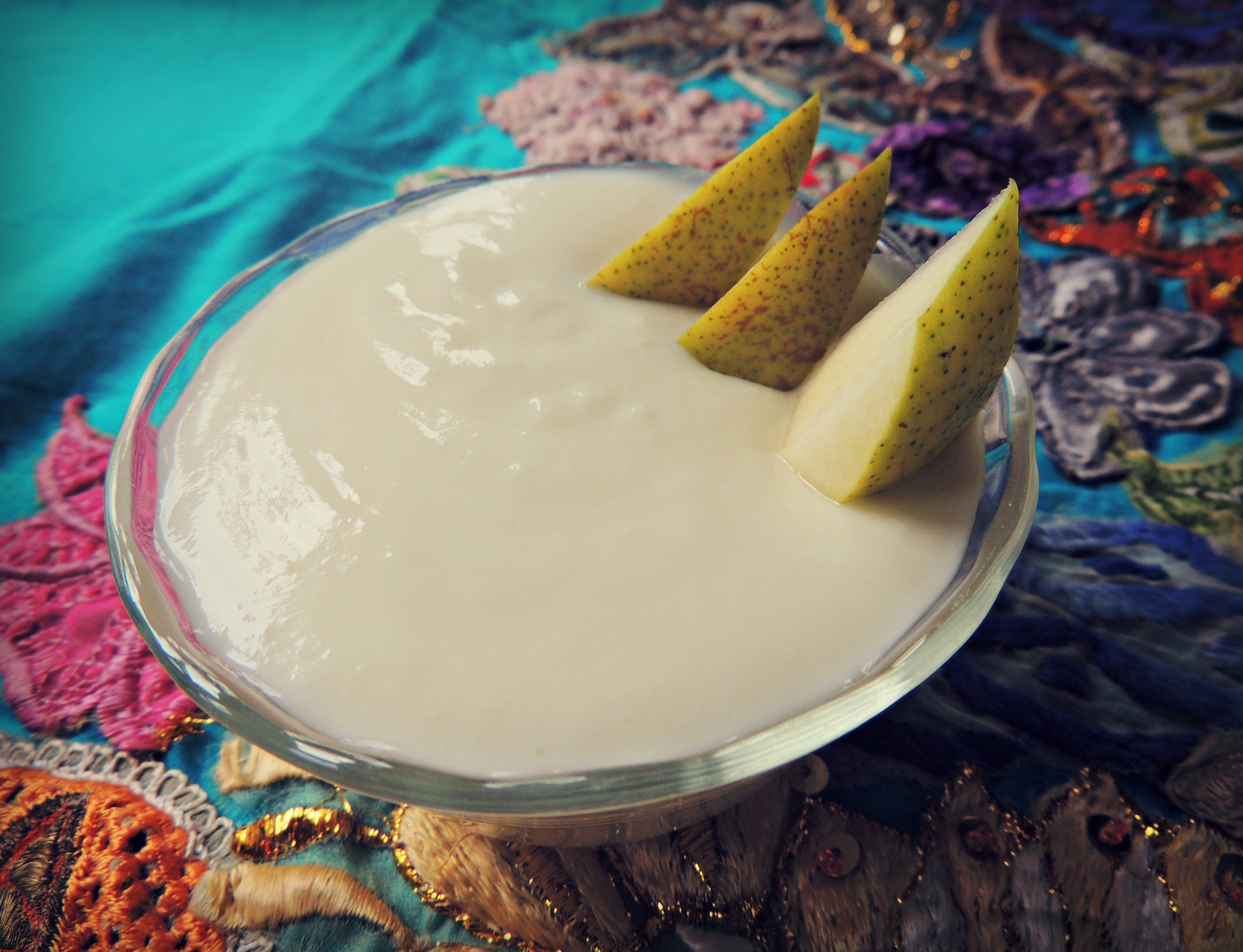
Yogurt Before Containers
There is no doubt that yogurt is a very beneficial food. This fermented dairy product has been cherished for generations by the peoples of Greece, Israel, Lebanon, and India among other nations for its unique strength-giving properties and enjoyable tangy flavor. Made from milk cultured with beneficial strains of bacteria, yogurt has a high protein, mineral and vitamin content that is unrivaled by other foods. Because it is fermented with probiotic bacteria, the bio-availability of vitamins is enhanced and some of the more difficult to digest components found in plain dairy products (such as milk sugar lactose and the protein casein), are broken down so that critical nutrients are more easily assimilated by your body. Nutrition experts such as Chris Kresser have even suggested that yogurt, in tandem with probiotic supplements, can help to reverse common cases of lactose intolerance by restoring healthy flora in your gut.
Yet in the scurry of industrialized mass production, many of the precious nutritive qualities of traditionally prepared yogurt are lost. Most varieties of commercial yogurt are fermented for very short periods of time (some for only about an hour), preventing the probiotic bacteria from reaching adequate strength and thwarting the breakdown of irritants. What’s more, thickeners must then be added to give yogurt its familiar look and texture. As one final blow, manufacturers will often heat-treat yogurt to extend shelf life- a process that kills off any lonesome strands of cultures that may have survived the other assaults. If you are shopping for commercial yogurt, it is crucial to find one in which the live cultures have been added after heating. Look for words like “active yogurt cultures,” “living yogurt cultures,” or “contains active cultures.” Don’t be fooled by claims of “made with active cultures”- just because the cultures were there in the beginning, doesn't mean that they remain in the final product. Also look for a whole fat yogurt- the fat in dairy is appetite stabilizing and nourishing to people of all ages. It helps in the absorption of the other beneficial components, and there is certainly no need to skim such a health-promoting nutrient out.
Making your own Yogurt
By Kayla - Radiant Life
Making yogurt at home allows you to control for the quality of ingredients and the length of time you ferment it for. It is so gratifyingly simple that I still have a proud "wallah!" moment every time I finish off a batch. While there are many variations of yogurt recipes, I like this one adapted from The Naked Foods Cookbook. If you haven't checked it out yet, this honest, real- food cookbook by Margaret Floyd and James Barry is one to add to your collection- it is bursting with flavorful recipes and refreshing wisdom to inspire a healthy reconnection to food.
The Players:
3 1/2 cups organic, raw milk
2 tablespoons room temperature organic plain yogurt or yogurt from previous homemade batch
Selecting Your Milk
The best milk to use is organic, raw whole milk from a local farm. This milk is rich with proteins, healthy fats, minerals and the numerous cofactors and enzymes needed for their absorption. In most states, supermarket milk is exclusively pasteurized through a process that significantly alters the structure of the milk itself and destroys valuable nutrients, leaving free-radical producing rancid fats and oxidized cholesterol lurking in its wake. Most milks have also been homogenized- a purely cosmetic process that prevents the fat content of the milk from separating, resulting in the uniformly white glasses we are used to seeing. The high pressures and heats used during homogenization break down fat globules and restructures the milk even further, compromising it’s natural stability. If you cannot find raw milk near you, the next best option is organic non-homogenized milk, which will also make a delicious and healthy final product!
Preparing the Starter
Each time you make yogurt you will need a starter culture to introduce the healthy bacteria that will begin the fermentation process. Eventually you can just use a few tablespoons of homemade yogurt from your previous batches to do so, but for your first round you can either use a commercial starter culture (available refrigerated in most natural food stores) or a high quality store bought yogurt. Remember to find a yogurt that contains "live cultures"- otherwise this recipe just won't work. It is best to warm the starter yogurt to room temperature before you begin, allowing the active yogurt cultures to “wake up" from the dormant state brought on by refrigeration.
Easy Yogurt in 4 Steps
Heat: In medium saucepan, warm yogurt to 180° F, which is just before the boiling point. Use a food thermometer to gauge the temp. This step sterilizes the milk. Although some of the enzymes are lost at this temperature, this process is important in creating a healthy environment where beneficial cultures flourish.
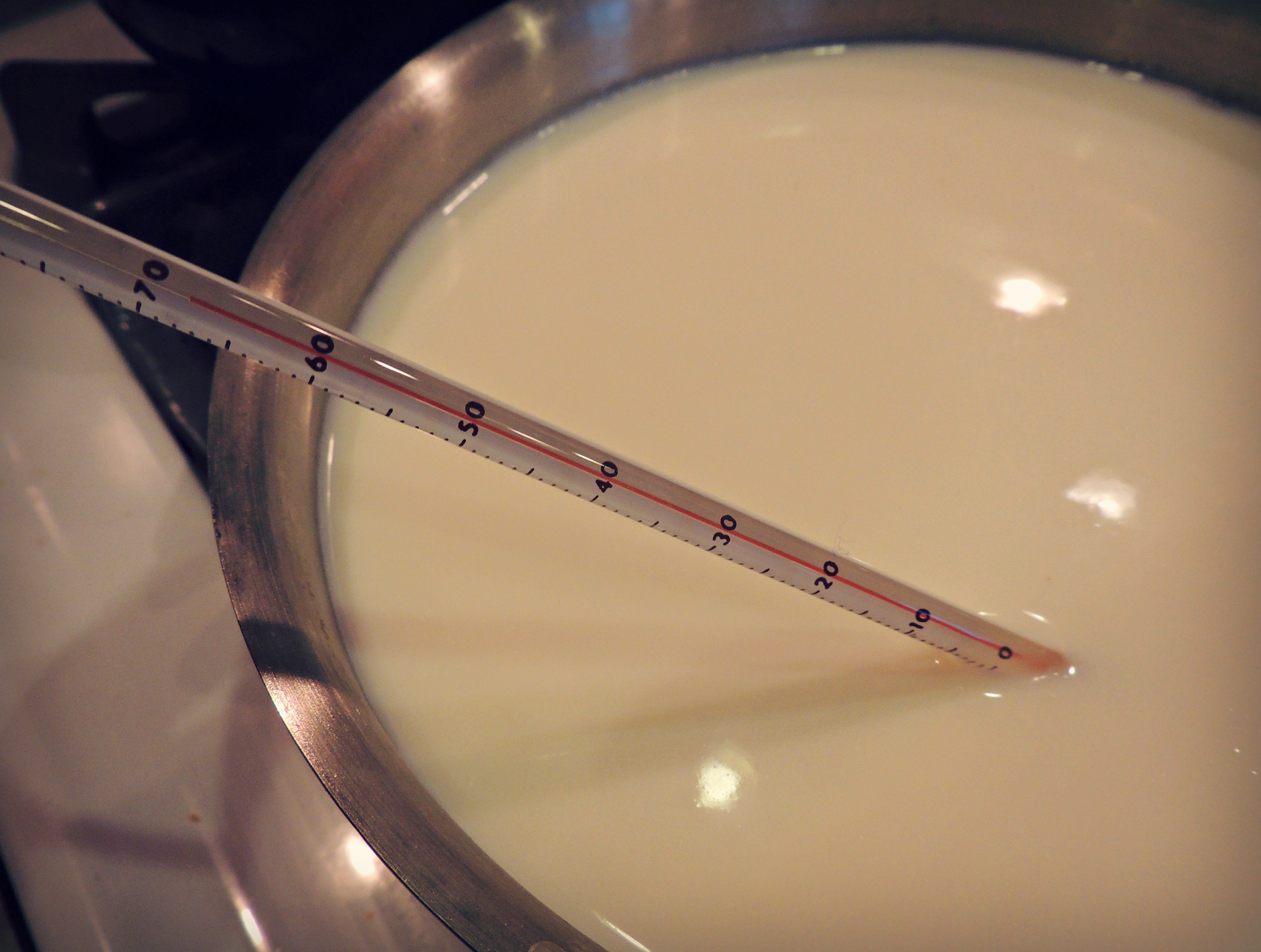
Cool: Pour warmed milk into a large bowl and allow to cool to 110° F. This could take over an hour depending on the average room temperature in your home. It is not advisable to place in the refrigerator, as this will cool the milk too rapidly. Don’t be alarmed if a skin starts to form atop the milk- this is a natural part of the cooling process.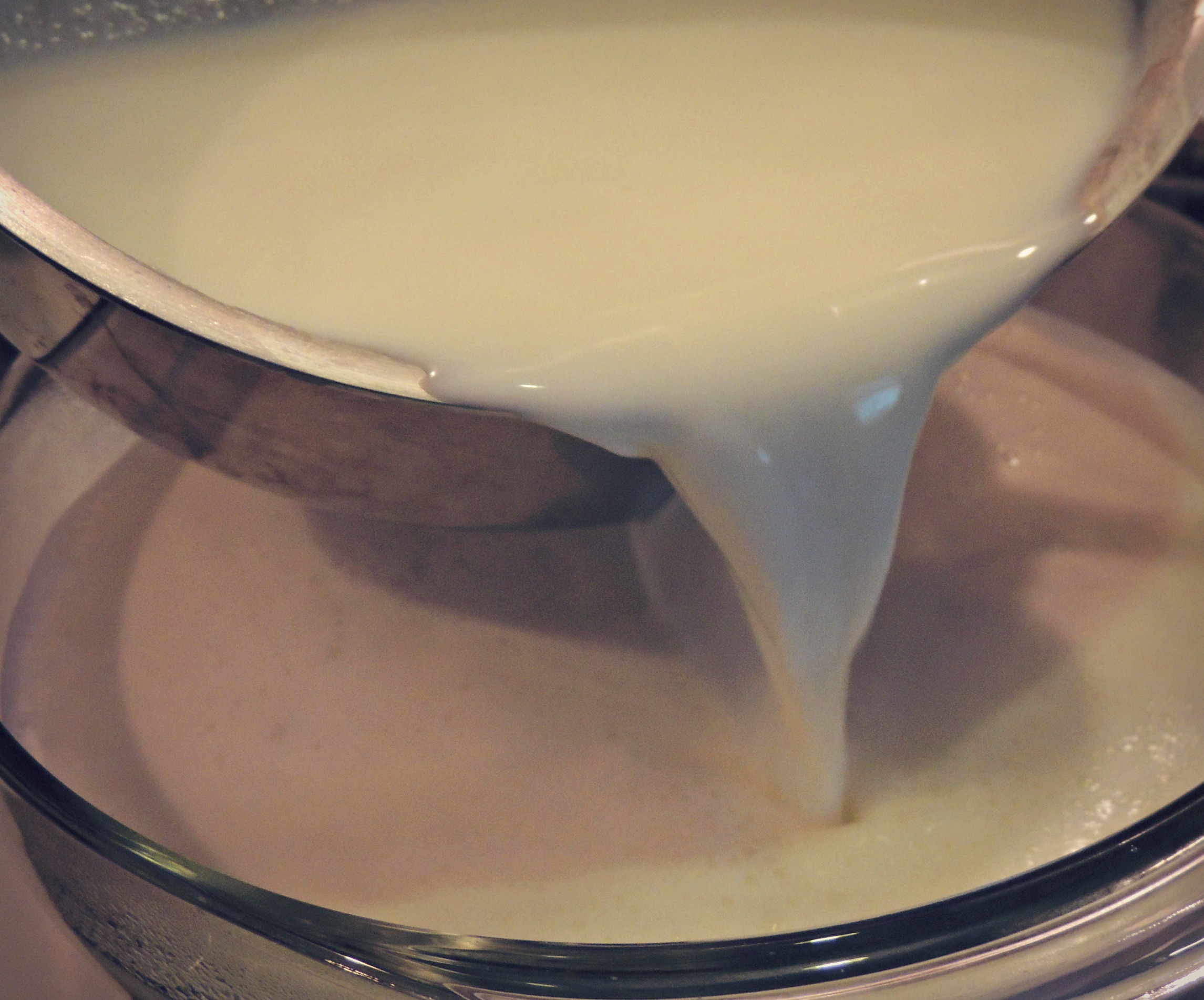
Culture: Add the starter yogurt or culture to cooled milk and stir thoroughly.
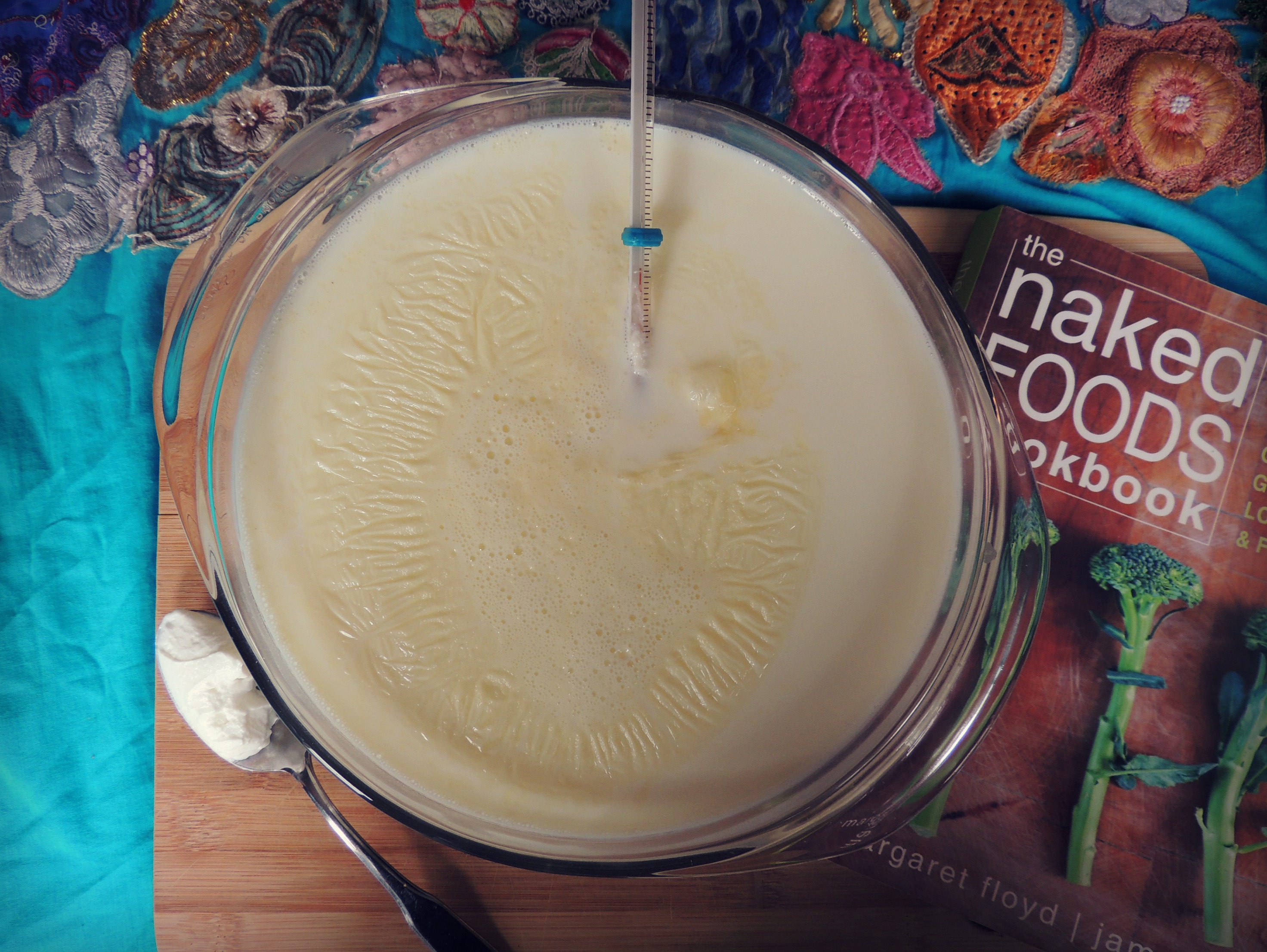
Incubate: Pour mixture into a quart sized mason jar, cover and place in warm environment. The ideal temperature for incubation is between 95-100 degrees F. This can be achieved by using a commercial yogurt maker (pictured here), food dehydrator, in a gas oven with just the pilot on, or an oven heated to its lowest setting (150 degrees F) and then turned off, with the door closed. Keep warm at least overnight, but preferably for 12-24 hrs. Once fermentation is complete, chill yogurt in the refrigerator prior to serving.
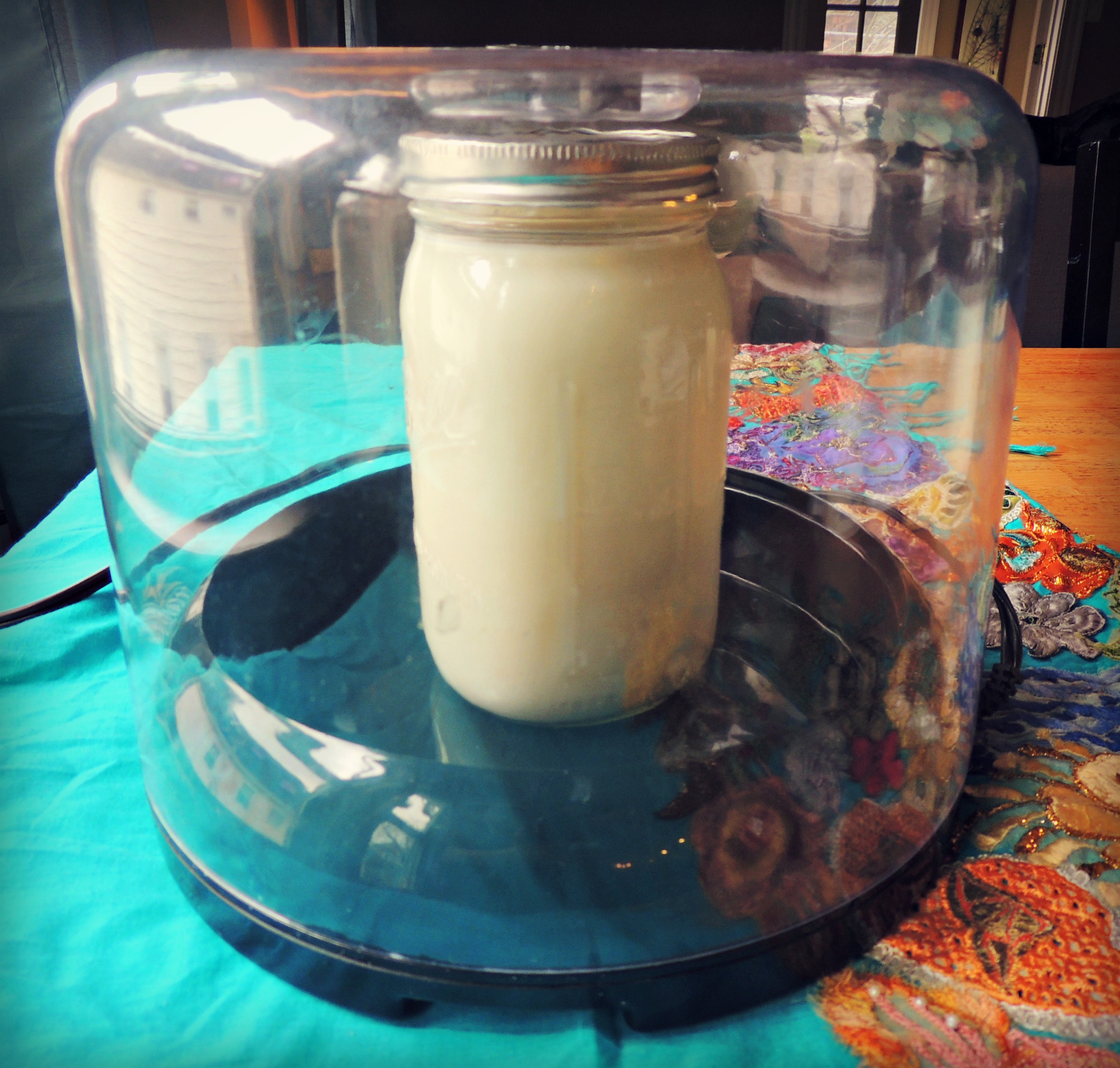
Enjoy! You will notice that homemade yogurt is a bit runnier and slightly less smooth than commercial varieties. You can make it thicker by straining out some of the whey (as is done with popular greek yogurt), but just note that this will result in significantly smaller amounts of yogurt. You can also mix in some bovine gelatin as a thickener if you prefer. Mix with some fresh fruit, chopped nuts, seeds, coconut flakes or raw manuka honey for a delectable snack!
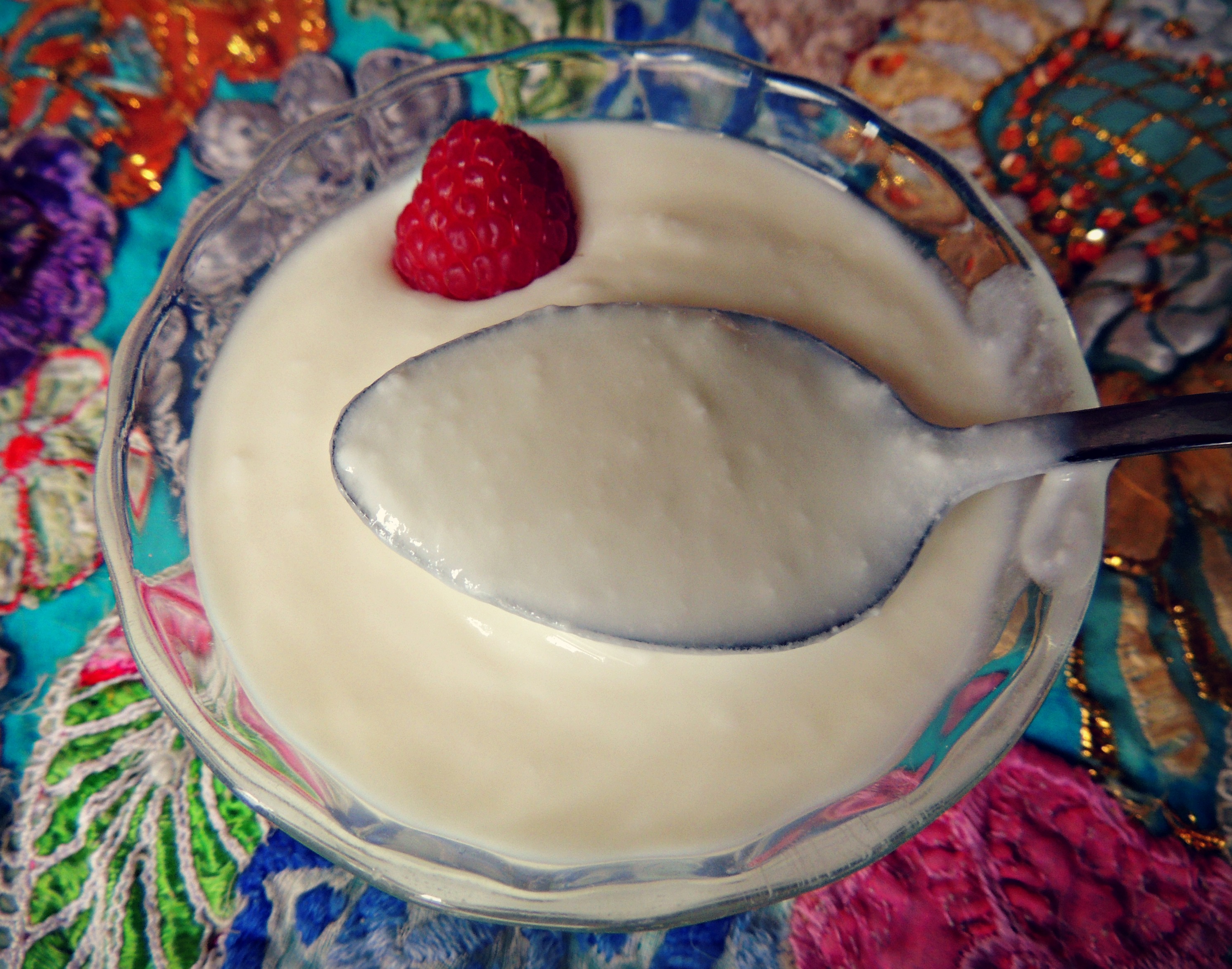
Learn More
Nourishing Traditions by Sally Fallon Morrell
The Nourishing Traditions Book of Baby & Child Care by Sally Fallon Morrell and Thomas S. Cowan, MD
Gut and Psychology Syndrome (GAPS) by Dr. Natasha Campbell-McBride, MD
Fermented Foods and Beverages Video, Weston A Price Foundation By Sarah Pope
